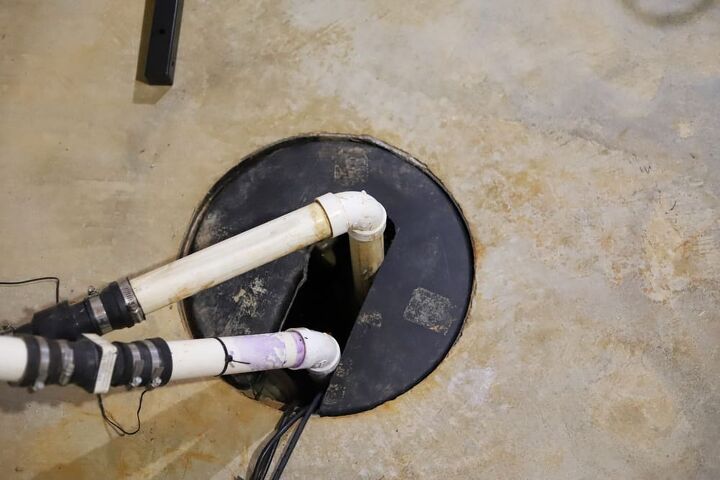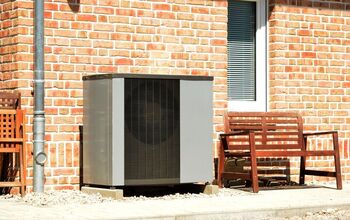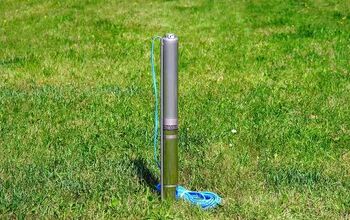Sump Pump Vs. Ejector Pump: What Are The Major Differences?

If your home has a basement, chances are you’ve had at least one conversation about sump pumps. They are essential to preventing flooding in basements and crawl spaces. Their lesser-known cousin, the ejector pump, looks very similar but performs a different function, so it’s worth comparing sump pumps vs ejector pumps.
The main difference between a sump pump vs. an ejector pump is sump pumps capture water coming into the basement, while ejector pumps pump water out. Sump pumps are responsible for dispersing water that comes in from outside the home (think groundwater and rain). Ejector pumps handle the sewage and wastewater generated from inside the house itself.
Both pumps are essential to keeping basements and crawl spaces safe and dry. These pumps are easy to ignore when they’re functioning correctly but disastrous if they stop. They are both essential aspects of a home’s water management system. Sump pumps and ejector pumps are not an either/or for your home, but a simple yes.
Do You Need to Hire Sump Pump Installers?
Get free, zero-commitment quotes from pro contractors near you.

What Do Sump Pumps And Ejector Pumps Do?
When comparing a sump pump vs. an ejector pump, there are several different qualities to consider. Of course, one of the biggest differences is what these pumps actually do.
Sump Pump
A sump pump helps prevent flooding in your basement, either from groundwater or precipitation. If your basement or crawl space is prone to flooding, a sump pump is a necessary investment. It will catch any significant groundwater seepage in addition to flooding from heavy rainfall or snowmelt.
Ejector Pump
An ejector pump is responsible for processing wastewater from sinks and sewage from toilets in the basement. It ejects gray water (like from laundry and slop sinks) as well as black water (sewage) from toilets. This matter is collected, processed, and sent to a septic tank or sewer.
The water that an ejector pump collects is only from the portion of the house that’s below the water table. The standard plumbing in the household handles everything else. For those appliances below grade, the ejector pump helps ensure the water makes it up and out of the house.
Sump Pump Vs. Ejector Pump: Appearance
Both the sump pump and the ejector pump look very similar. Many people are familiar with the sump pump’s look but wonder why there’s a second, similar-looking pump nearby.
Comparing a sump pump vs. an ejector pump, you can find both pumps inside cylindrical containers called sump basins. They are at least two feet deep and are set into the floor. Their tops are flush with the floor’s surface, so their cavernous cylinders are mostly hidden from view.
Sump Pump
The sump pump’s cylindrical container is open at the top, often with some kind of removable cap. This cap prevents moisture from coming back up into the basement space from the sump basin, among other functions. The basin has a gravel bottom, allowing water to drain to the earth below.
You will see a long, skinny discharge pipe coming out of the top. This pipe diverts water outside and away from the house. There are a few different kinds of sump pumps, but all share these common features.
Ejector Pump
Ejector pumps have the same basin as their foundation but feature a tightly sealed lid. Since this pump handles sewage, it’s necessary to have a tight seal. This keeps in the waste that it’s processing and limits odors.
This pump has two pipes coming from its top. One is for water, and the other is for sewer gasses. If there’s just water, no sewer, that drains through the ejector pump, there may only be one pipe. In that case, the vent pipe is not necessary.
How Do Sump Pumps And Ejector Pumps Work?
Sump Pump
A sump pump collects water that accumulates and redirects it out of the basement or crawlspace through a discharge pipe. Sump pumps typically collect groundwater. Because this water comes from the earth, it’s generally clean, clear, and cold.
The pump turns on when the water level in the basin rises enough to activate a floating sensor. It’s connected to a drain tile system, which helps channel the water into the pump. It then sends it out to its designated dispersal device.
Ejector Pump
Ejector pumps work very similarly to sump pumps. They receive the wastewater from sinks and toilets, capturing and grinding up solid waste. The vent pipe funnels fumes from sewage out of the house. Liquid waste goes into the sanitary sewer or septic tank for disposal along with the rest of the home’s waste.
Sump Pump vs. Ejector Pump: Why Do You Need Each One?
Sump Pump
A sump pump is essential when part of your property (like a basement or crawlspace) is below the water table. This term indicates the depth at which the ground becomes saturated with water. It fluctuates throughout the year due to rainfall and other factors.
You need a sump pump in your home if your area has a high water table. Other factors include a history of flooding and the annual amount of rainfall. If your area has no access to a city storm drain or has poor drainage, a sump pump is beneficial.
If you have a finished basement, a sump pump can be doubly important. Floods are always inconvenient and messy, but flooding a finished living area can be even more costly and disruptive. A sump pump can prevent damage to floors, furniture, personal property, and the structure of the home.
Ejector Pump
If you have a bathroom in your home below the water table, an ejector pump is an important investment. If you use lots of water in the basement, from laundry, for example, an ejector pump helps process this water. Some people even use ejector pumps as an extra step to reduce flooding if their house uses a septic system.
Where Does The Water Go?
Sump Pump
When a sump pump diverts water out through its discharge pipe, it can send it to several dispersal devices. Sometimes it goes to a municipal storm drain; other times, it gets distributed over a lawn. Occasionally, a specific installed dispersal device like a bubbler pot or dry well processes the runoff.
Ejector Pump
An ejector pump’s discharge pipe connects to the sanitary sewer. The solid waste is ground up and can be sent, along with the wastewater, through the house’s plumbing system. Think of an ejector pump as a turbo boost for the basement’s plumbing: it supplements the house’s existing plumbing.
How Can Sump Pumps And Ejector Pumps Malfunction?
Sump Pump
One common malfunction for a sump pump occurs in the float switch. This is the floating sensor that tells the pump to activate when the water rises to meet it. If this switch is damaged, the pump won’t know when to turn it on and off. This can result in flooding (if it doesn’t turn on in time) or constant running when unnecessary.
There’s also a chance that the backup battery will fail. Electricity powers sump pumps, but many come with a battery-powered backup. In the event of a storm big enough to cause a power outage, it’s crucial to have a backup. Many storms of that magnitude bring rain that’s heavy enough to cause flooding.
Ejector Pump
The most common malfunction for an ejector pump occurs when there are too many solids in the sewage waste. If you dispose of items other than human waste in the toilet, they can clog the grinder in the pump.
If the ejector pump fails, it can cause flooding. This flooding yields a smaller amount of water than a sump pump malfunction, which is the good news. The bad news is that the flood contains sewage, which requires heavier disinfection and cleaning.
Ejector pumps also require electricity to run. They, too, have a battery backup in many cases, which can, of course, fail as well.
What Are The Failsafes To Prevent Errors?
Both the sump pump and ejector pump should have an alarm in the sump basin to prevent overflowing. These alarms are on floaters like the float switch, making it sound when the water level reaches the alarm. That’s your signal to either shut off the water supply or call an emergency plumber (or both)!
If you’re buying a new home with a sump pump and ejector pump, make sure to test them thoroughly before purchase. Test the overflow alarms by filling the basins with water up to that level. This can save you a big headache later if it prevents a flood.
Battery backups are your best line of defense when the power goes out, but only if you install them properly. Make sure to keep the battery above the level where water will rise.
This is also true of the electrical outlet. Instead of placing it by the baseboards like typical outlets, raise the plug to a mid-wall height. This will make it more resilient in case flooding does occur. Home inspectors (and homeowners) should also test out the battery backups to ensure they’re in good working order.
Sump Pump vs. Ejector Pump: Maintenance
Sump Pump
Sump pumps require routine maintenance and testing to stay in good working order. You should test the pumps at least once a year, if not more often.
To test the pump, use a five-gallon bucket to fill the basin with water. If the pump activates when the water level rises, you’re in good shape. Keep an eye on it until all the water has drained to make sure nothing is clogging the pipe. It’s also not a bad idea to check in with the battery backup and see if you need to charge it.
Ejector Pump
When you compare a sump pump vs. an ejector pump, you’ll be happy to note that an ejector pump typically doesn’t need maintenance. Since the ejector pump is sealed shut to prevent sewage leaks and fumes, it does not require routine maintenance. (Thank goodness).
However, that means if things do go wrong, it’ll be time to call in the professionals. That is unless you’re game for a very messy job.
Do You Need to Hire Sump Pump Installers?
Get free, zero-commitment quotes from pro contractors near you.

Related Questions
Is an ejector pump the same thing as a sewer pump?
Yes, it is. The ejector pump goes by a few names. Sometimes it’s referred to as a sewer ejector pump, a grinder pump, or just a sewage pump. It’s called a grinder pump because it grinds up solid waste. Once ground, the waste can fit through the pipe transporting it out of the house.
How long is the lifespan of each pump?
Like any appliance, sump pumps and ejector pumps have a limited lifespan. A sump pump will likely last 3-5 years, while an ejector pump might last 7-10 years. Of course, the better care you take of your equipment throughout its life, the longer it will last. So know the terms of your warranty, and don’t skimp on annual maintenance.
Why does my sump pump or ejector pump keep running?
If the sump pump is running constantly, the likeliest cause is the float switch is stuck in the “on” position. If the ejector pump keeps running, the likely cause is a clog in the main sewer line.Another possibility for a constantly running ejector pump is an issue with the check valve. Since you likely need to deal with human waster to investigate the issue, you might want to call in a pro. If you need a plumber to replace your ejector pump, you could end up paying about $2,500 for parts and labor.

Stacy Randall is a wife, mother, and freelance writer from NOLA that has always had a love for DIY projects, home organization, and making spaces beautiful. Together with her husband, she has been spending the last several years lovingly renovating her grandparent's former home, making it their own and learning a lot about life along the way.
More by Stacy Randall



























